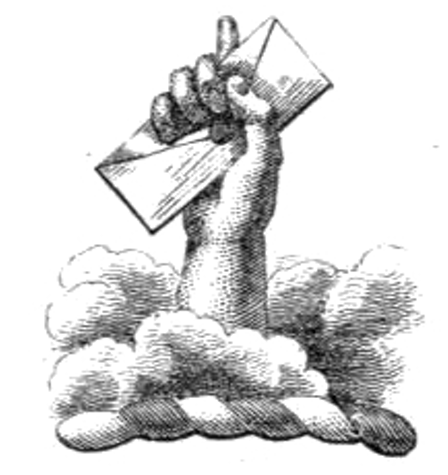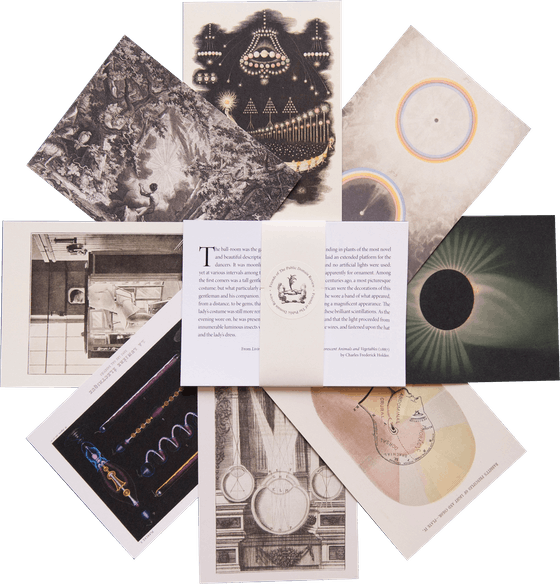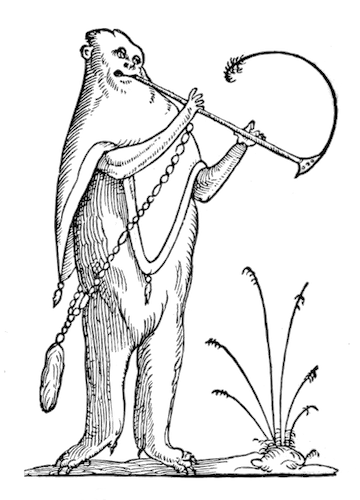
Roma Lister, Aradia, and the Speculative Origins of a Witchcraft Revival
In 1899, Charles Godfrey Leland published Aradia, “the gospel of the witches”, containing a goddess-orientated creation and saviour narrative, purported to descend from an ancient, hermetic tradition of witchcraft in Italy. A. D. Manns explores this text via an enchanting conjecture: that the writer, medium, and witch Roma Lister played a pivotal role in the formation of both Aradia and, therefore, a new form of paganism called Wicca.
November 12, 2025
Giuseppe Pietero Bagetti, The Walnut Tree in Benevento (the Witches’ Sabbath), ca. 1816 — Source.
In 1899, the aging American journalist Charles Godfrey Leland brought out what he described as a bona fide witchcraft “scripture” of unknown authorship. Asserting that he had acquired the source material republished in Aradia, or, The Gospel of the Witches from Maddalena, a Tuscan fortune teller, Leland presented the book as a groundbreaking discovery proving that paganism had survived undetected in Italy since at least the Middle Ages. Although Leland said the original manuscript — since lost — was in Maddalena’s handwriting, he believed that Maddalena had “derived” its content from an older oral tradition. Leland had, he claimed, spent over ten years trying to find this legendary gospel (the Vangelo), scouring the Italian countryside while immersing himself in a world of “witches and shadows, faded gods and forgotten goblins of the olden time”.12
Throughout his colourful life, Leland had frequently been known to break with tradition and social convention. He dined with pirates on the high seas, fought against monarchists in the 1848 French Revolution, railed against the American Confederacy and slavery as an editor of and contributor to pro-Union broadsheets, collected and utilised magical amulets, and even developed an arts and crafts–focused educational system that received praise from Oscar Wilde. The witches’ gospel, however, took him to stranger, uncharted territory. Its rousing, witchcraft-centric, and anti-authoritarian message was different from anything with which Leland had been previously associated.
What was novel about the manuscript was its goddess-orientated creation and saviour narrative, a “myth found nowhere else” (in the words of witchcraft historian Ronald Hutton).3 The book explained that the Goddess Diana instructed her daughter, Aradia, to save poor and disenfranchised members of society from enslavement. To fulfil this mandate, Aradia taught them sorcery, an art enabling the downtrodden not only to free themselves from the subjugation of the rich, but also to destroy hierarchies of oppression in their entirety.4 This myth appears in the first chapter of Aradia; the rest of the book includes a number of spells, rituals, and poems as well as Leland’s extensive commentary.
Title-page of Charles Godfrey Leland’s Aradia, or, The Gospel of Witches (1899) — Source.
In the text, Aradia explains that Christianity, as advertised by its most powerful exponents, was a religion of diabolism. Its hierarchs, she maintained, were literal devil-worshippers, not to be emulated:
And when the priests or the nobility
Shall say to you that you should put your faith
In the Father, Son, and Mary, then reply:
“Your God, the Father, and Maria are
Three devils.
“For the true God the Father is not yours;
For I have come to sweep away the bad,
The men of evil, all will I destroy!”5
Essentially, Aradia’s weapon, the key gift with which she armed her followers, was hidden knowledge. This knowledge — sorcery — was a tangible and practical power, a force that gave its wielders dominion over and freedom from torturous circumstances and repressive taboos:
She who fain
Would learn all sorcery yet has not won
Its deepest secrets, them my mother will
Teach her, in truth all things as yet unknown.
And ye shall all be freed from slavery,
And so ye shall be free in everything . . .
And as the sign that ye are truly free,
Ye shall be naked in your rites, both men
And women also: this shall last until
The last of your oppressors shall be dead.6
Aside from a few reviews in scholarly publications like Folklore and Notes and Queries, Aradia received scant public attention during Leland’s lifetime. But in the 1950s, the book found its way into the capable hands of the “mother of Wicca”, Doreen Valiente, who used it to rewrite Wiccan rituals that had come down from Wicca’s founder, Gerald Gardner (1884–1964). As a result of Valiente’s repurposing, Aradia became a book that, in many ways, shaped the philosophical and aesthetic landscape of modern Wicca.7
Guglielmo della Porta, The Witches at the Walnut Tree of Benevento, ca. 1534–77 — Source.
Even though Wicca has become one of the fastest growing and culturally influential modern religions, the true source of the “gospel” in Aradia remains a mystery. Some of the spells and recipes mentioned in the text may have their origins in genuine Italian folk magic traditions; no evidence has emerged, however, to support the contention that groups of nineteenth-century Italians were practising an organised pagan religion with pre-modern origins. “It is hard to believe”, Hutton noted in The Triumph of the Moon (1999), “that the reactionary Roman Catholic regimes which controlled central Italy until 1859 – the Kingdom of Naples, the Empire of Austria (of which Tuscany was a dependency), and the Papal State (which included the Romagna) – would not have noticed the existence of whole villages which rejected Christianity and of a secret sect of pagan witches.”8 Furthermore, despite an abundance of primary source material available to historians on medieval and Renaissance heretical sects, no record exists of a witch-cult like the one mentioned in Aradia.9
Generally, skeptical scholars have theorised that the original manuscript could have been authored by Leland or co-authored with Maddalena. Others like Hutton have suggested the possibility that Leland was duped by Maddalena, who passed her original work off as historical.10 Leland did pay her a salary to collect folklore for him, and — as they had known each other for years — she would have had a good sense of what he wanted to see.11 One possible contributor or co-creator, however, has been overlooked as a feasible (though speculative) source: the writer Roma Lister.
Photograph of Roma Lister from Lilian Whiting’s The Golden Road (1918) — Source.
Born to a well-heeled British family with ties to Queen Victoria and raised in Rome, Lister moved to Florence in the 1890s and quickly befriended Leland, who had been living in the city with his wife since winter 1888.12 Leland and Lister’s meeting seemed fated by the stars: Leland needed help translating a manuscript from the Bolognese dialect, and Lister had been wanting to act as an interpreter. In the first part of her memoirs, Reminiscences: Social and Political (1926), Lister said that she and Leland took to each other immediately:
So I sat down . . . and began to interpret the script. I was fortunately not ignorant of the Bolognese dialect, and the work went easily enough. Then we began to talk Italian folklore and . . . time no longer existed for us. My mother was horrified, for it was past eight o’clock when at length she succeeded in carrying me off, Mr. Leland making an appointment to meet again the next afternoon. Here, at last, I had found a mind that cared for the studies of my own childhood’s days, and one to whom they would be of use.13
From about 1893 to at least February 1897, Lister worked as one of Leland’s trusted research assistants, securing — from the Florentine populace and contacts further afield in the Castelli Romani — reams of folktales, fairy lore, and incantations for at least three of Leland’s books (the two-volume Legends of Florence, published 1895–96; and 1899’s Unpublished Legends of Virgil). After Aradia’s publication, Lister still retained contact with local magical practitioners, and in 1901, she was even sought out by Sir James George Frazer (author of The Golden Bough). Frazer, who was intrigued by Lister’s ties to “native” witches, said that she knew of “many” in the Italian countryside who were “thoroughly pagan, with only a thin veneer of Christianity”.14 Notably, Lister was acquainted with Leland’s informant, Maddalena, and it was from her — according to Leland — that she learned the “sublime art of battezare le carte, or telling fortunes by cards, and other branches of the black art”.15
In addition, Lister occasionally served as an intermediary between Leland and Maddalena, transcribing Maddalena’s collectanea to make them more readable.16 However, unlike Maddalena, Lister was a member of several international scholarly societies, such as the Italian Folklore Society and the International Congress of Christian Archaeology. She maintained a high level of public visibility during her lifetime; as a result, she remains the only witchcraft informant in Leland’s direct network whose biographical and genealogical details are corroborated by multiple documentary sources.
 Scroll through the whole page to download all images before printing.
Scroll through the whole page to download all images before printing.Frontispiece photograph of Charles Godfrey Leland from Elizabeth Robins Pennell’s Charles Godfrey Leland: A Biography (1906) — Source.
 Scroll through the whole page to download all images before printing.
Scroll through the whole page to download all images before printing.Photograph captioned “Maddalena, a Florentine ‘Witch’”, from Elizabeth Robins Pennell’s Charles Godfrey Leland: A Biography (1906) — Source.
Lister first elaborated her unique connection to Italian witches at the Collegio Romano in November 1893, at the inaugural conference of the Italian Folklore Society. As both the youngest person and the only woman invited to present a paper, Lister was treated like a celebrity; newspapers announced her arrival in Rome, and she was greeted with applause “at all events”.17 The content of her lecture, however, likely went far beyond anything the audience was expecting. In the first few moments of her speech, Lister declared that her entire life had “been spent among witches and wizards”.
Growing up in the Roman countryside and surrounded by local women who sometimes treated her with magical remedies, Lister herself had been “lulled with magical invocations” and “made to memorise spells and legends more or less of classical origins”. In her talk, she expressed dismay that certain folkloric traditions and the “names of spirits” were fading from public memory. Supernatural beings, for instance, were becoming scarcer and scarcer: “A close friend assures me that there are now no more than two werewolves left in her village; witches too have decreased in number.”18
One can only imagine the looks of amazement or incredulity on the faces in the audience. And such was the popularity of her lecture that Lister was subsequently approached by a local business owner who suspected that his dwindling profits were caused by “the evil eye”. Confident in her powers, she treated the owner and his family with her “pocket godling”, a magical stone that had previously belonged to a wizard:
Before it came into my possession, the charm had belonged to an old man who lived in the woods near Bagni di Lucca. For many years it had given him a fair living. Peasants came long distances, even forty miles, to rub their aching joints on the talisman. The wealthier peasants used to bring a black cock, kill it and paint the stone with the blood. This was a certain cure, but if the client's purse was short, the wizard would, for a small extra payment, give the stone a fresh generous brushful of red paint and all would be well.19
Later on, Lister learned that her intervention had been successful. “I was rewarded afterwards”, she wrote, “by hearing that [their] winter's receipts had increased accordingly.”20
To Leland, witches represented a “fragmentary secret society”, composed mostly of close-knit family members and individuals who secretly held heterodox views.21 They only divulged their knowledge to fellow initiates and those who shared their philosophy of life. Leland accordingly saw Lister as his insider, one whose witch heritage made her uniquely adept at “conjuring” esoteric secrets out of fellow magi. “As the proverb says”, explained Leland, “‘Take a thief to catch a thief,’ so I found that to take a witch to catch witches, or detect their secrets, was an infallible means to acquire the arcana of sorcery.”22 In Reminiscences, Lister provided some insight into what this process of “conjuring” looked like:
For the “profane”, I may mention that before the witch will open her mind to you, an exchange of information takes place. The catechising most resembles that of true Scottish spinsters, with the difference that even as the gentlewoman enumerates the ancestral glories, this becomes a rehearsal of incantation lore, the witch tells of the wonders she can work — the charms gradually increasing in potency and terror — striking force, and you on your side, call upon your store of hair-raising incantations, after which review of powers so to say, you both subside comfortably into personal topics.23
Given both Lister’s relationship with Leland and Maddalena and her personal and professional involvement in the practice and study of magic, it’s not unreasonable to suspect that she had some role in the composition of Aradia. Lister was not just in the right place at the right time. At the very least, as a savvy researcher, magical practitioner, and fixer, she certainly had the resources to help draft the manuscript. Yet another, perhaps more interesting, theory is that Lister “channelled” parts of the core text. It’s an idea that’s worth considering, given the text’s relatively modern provenance and the nature of Lister’s experiments with spiritualism, which overlapped with her work with Leland. Multiple sources attest to the fact that Lister, in addition to being a researcher, was a medium and automatic writer.
In the 1890s, while collaborating with Leland, Lister furtively spoke to disembodied entities, conducted psychic healing sessions, and experimented with crystal-gazing. Her aunt, Julia Rosenkrantz — an established spiritualist medium in her own right — mainly oversaw her training, arranging for her to learn hypnosis and taking her to séances with famed psychics like the Neapolitan medium Eusapia Palladino.24 In his memoirs, Arild Rosenkrantz (Julia’s son), wrote that Lister and his mother spent hours evoking and communicating with spirits. They left behind volumes of documents and drawings from their experiments, many of which are currently housed in the Psychic College of London.25 As early as January 1897, Lister’s friends were also describing her as a “spiritualist”. By 1901, she was signing papers with the post-nominals “F.T.S.” (Fellow of the Theosophical Society).26
Photograph of a séance led by the spiritualist Eusapia Palladino at astronomer Camille Flammarion’s home in France on November 25, 1898 — Source.
In the early 1900s, Lister secretly contributed to Colloquies with an Unseen Friend, a book produced via automatic writing that detailed conversations with “Fidelio”, a spirit from Atlantis. The book, which was co-authored by Lister’s friend, the British-German noblewoman and occultist Lady Walburga Paget, was wide-ranging in its scope, containing a number of themes aligned with the philosophical and cosmological views of the Theosophical Society.27 Writing under Fidelio’s influence (and under the pseudonym of “Tarquinia”), Lister narrated the rise and fall of Atlantis, declared the existence of underground cities and prehistoric fauna in Patagonia, explained the process and purpose of reincarnation, prophesied about future world wars, and mapped how certain secret societies influenced the French Revolution and other historical events.28
Although the book was composed several years after Aradia (between 1903 and 1905), it suggests that Lister had the capability to seemingly channel deeply rich and varied mytho-religious narratives. Moreover, in the text, Paget (who appeared under the pseudonym “Ermenegilda”) acknowledged that prior to their 1903 collaboration, Lister had developed relations and worked with several spirit guides.29
Hence a bold and delicious (if somewhat quirky) question presents itself: what if Lister channelled elements of Aradia? Perhaps, if she did channel parts of it, one or more of these spirit guides mentioned by Paget may have served as her source. And maybe, just as Colloquies reflected the spiritualistic and Theosophical interests of its contributors, automatic writings produced in another setting — a circle of Italian folk witches, for example — would have reflected the views and desires of those same witches. Could this have been the sort of context, with or without Leland’s knowledge (and possibly with Maddalena’s help), in which an early manuscript of Aradia was created?
“The Wise Wives of Tuscany”, from Charles Godfrey Leland’s friend and colleague Rev. J. Wood Brown’s Florence Past and Present (1911)— Source.
Even if Lister did not channel aspects of Aradia, it would be hard to imagine that she did not contribute to it in some way. Leland received the manuscript from Maddalena in January 1897, at exactly the same time that he was receiving masses of collected folklore from Lister. Notably, Leland incorporated Lister’s materials in his book Unpublished Legends.30 Both this work and Aradia were published between the autumn and winter of 1899. Although Aradia came out slightly earlier, Leland acknowledged that some of its supplementary tales were drawn from Unpublished Legends.31 This means that both Aradia and Unpublished Legends drew from primary source materials that were in Leland’s possession before he sent his draft of Aradia to his publisher in 1897. The key challenge with all this is that Leland — while occasionally crediting his informants — did not do so comprehensively and routinely. Sometimes his acknowledgements were done in a general way (as in the published Aradia, where he mentioned his debt to Maddalena as well as “other authorities”).32
In the very least, Lister should now be seen as one of the hidden women who laid the groundwork for the revival of modern witchcraft. Leland — then an elderly, often bedridden man — mainly relied on Maddalena, Lister, and their respective informants for on-the-ground data on the more obscure aspects of Italian regional beliefs and customs. Consequently, it was their work that helped to inform and shape Leland’s perceptions of what contemporary Italian witchcraft looked like.
Aradia and Wicca — the religion it helped cultivate — could therefore be seen as products of this collaborative, mostly women-driven research and collection process. Like Diana’s daughter, Aradia, who shared hidden truths with humankind, Lister helped make the unseen seen by bringing long-overlooked folklore back into the public spotlight. Regardless of its true origins, magical women supplied Aradia’s source material, and Valiente — another magical woman — adapted their contributions, stoking a fire destined to power a new religion of witches.
A. D. Manns is a historian and writer. He holds a PhD from the Warburg Institute and has long maintained a deep interest in comparative religion, folklore, and mystical literature.
The text of this essay is published under a CC BY-SA license, see here for details. It has been adapted from A. D. Manns’ forthcoming book, Aradia’s Hidden Hand: The Untold Life of Roma Lister (Hexen Press, 2025).
Enjoyed this piece? We need your help to keep publishing.
The PDR is a non-profit project kept alive by reader donations – no ads, no paywalls, just the generosity of our community. It’s a really exciting model, but we need your help to keep it thriving. Visit our support page to become a Friend and receive our themed postcard packs. Or give a one-off donation. Already a supporter? A huge thank you for making all this possible.













